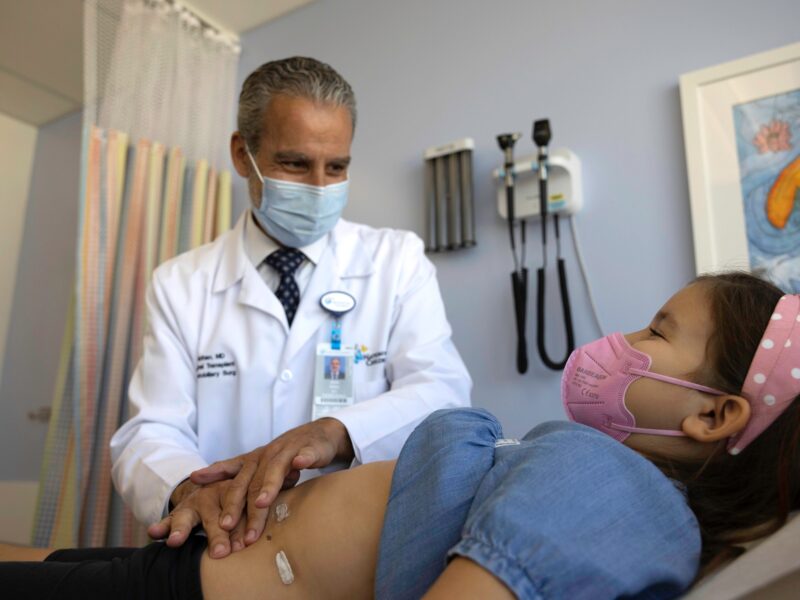How One Family In Appalachia Changed the Medical Field’s Understanding of Pancreatitis
How One Family In Appalachia Changed the Medical Field’s Understanding of Pancreatitis https://pediatricsnationwide.org/wp-content/themes/corpus/images/empty/thumbnail.jpg 150 150 Katie Brind'Amour, PhD, MS, CHES Katie Brind'Amour, PhD, MS, CHES https://pediatricsnationwide.org/wp-content/uploads/2021/03/Katie-B-portrait.gif- September 22, 2022
- Katie Brind'Amour, PhD, MS, CHES
More than 30 years ago, a teenager from Kentucky named Kevin Slone had his first attack of acute pancreatitis. Doctors at the Cleveland Clinic urged his father, Bobby Slone, to try to document whether other people in the family had similar stomach problems.
Bobby Slone took the homework to heart, documenting incidences of similar symptoms across multiple generations of his family tree. The family’s health issues were so pervasive in their home region of Appalachia that it was already a well-known condition: “Slone’s Disease.”
When Kevin was again admitted for pancreatitis, this time to the University of Kentucky, a staff gastroenterologist who had long been laboring to uncover potential genetic causes for pancreatitis jumped at the opportunity to meet the Slones. Thanks to the family’s pre-documented medical history and willingness to coordinate a reunion for the collection of blood samples, the Midwest Multicenter Pancreatic Study Group identified the first genetic marker for hereditary pancreatitis, on chromosome 7q35.
Since their 1996 publication in Gastroenterology, findings on hereditary pancreatitis and genetic risk factors for pancreatic disease have been steadily growing. Now, clinicians and genetic counselors have a strong appreciation for hereditary causes, which are a much more common factor among children with pancreatitis than among adults.
In fact, the INSPPIRE cohort uncovered genetic mutations among nearly half (48%) of children with acute recurrent pancreatitis, and among nearly 3 in 4 (73%) of those with chronic pancreatitis.
“We have gotten to the point in advanced pancreatitis care that understanding whether there is a genetic component can meaningfully alter the care plan for patients,” says A. Jay Freeman, MD, medical director of Pancreas Care at Nationwide Children’s Hospital, who recommends obtaining a genetic screen for children after a second episode of acute pancreatitis, or whose first episode occurs prior to 6 years of age. “Children with a hereditary or genetic cause are predisposed to have recurrent pancreatitis episodes and potentially an increased inflammatory signal, which makes them more likely to develop chronic pain and sensitization.”
Primary care providers can typically order small (four-gene) panels, but specialized pancreas care centers often offer eight- or even 12-gene panels that will give a more comprehensive result regarding a hereditary component of disease. Known genetic mutations that carry increased risk of pancreatitis include variations in the PRSS1, CFTR, CTRC, SPINK1, CPA1, CEL, CEL-HYB and CLDN2 genes. The PRSS1, SPINK1, CTRC and CFTR mutations are particularly common in children with chronic pancreatitis.
“Having a genetic component to pancreatic disease makes it more likely that pain won’t be well managed by conventional operations,” says Jaimie Nathan, MD, chief of Pediatric Abdominal Transplant and Hepatopancreatobiliary Surgery at Nationwide Children’s. “That knowledge is essential to making an informed decision about surgery and the overall care plan.”
Reference:
Whitcomb DC, Preston RA, Aston CE, Sossenheimer MJ, Barua PS, Zhang Y, Wong-Chong A, White GJ, Wood PG, Gates LK Jr, Ulrich C, Martin SP, Post JC, Ehrlich GD. A gene for hereditary pancreatitis maps to chromosome 7q35. Gastroenterology. 1996 Jun;110(6):1975-80.
About the author
Katherine (Katie) Brind’Amour is a freelance medical and health science writer based in Pennsylvania. She has written about nearly every therapeutic area for patients, doctors and the general public. Dr. Brind’Amour specializes in health literacy and patient education. She completed her BS and MS degrees in Biology at Arizona State University and her PhD in Health Services Management and Policy at The Ohio State University. She is a Certified Health Education Specialist and is interested in health promotion via health programs and the communication of medical information.
-
Katie Brind'Amour, PhD, MS, CHEShttps://pediatricsnationwide.org/author/katie-brindamour-phd-ms-ches/April 27, 2014
-
Katie Brind'Amour, PhD, MS, CHEShttps://pediatricsnationwide.org/author/katie-brindamour-phd-ms-ches/April 27, 2014
-
Katie Brind'Amour, PhD, MS, CHEShttps://pediatricsnationwide.org/author/katie-brindamour-phd-ms-ches/April 27, 2014
-
Katie Brind'Amour, PhD, MS, CHEShttps://pediatricsnationwide.org/author/katie-brindamour-phd-ms-ches/April 28, 2014






